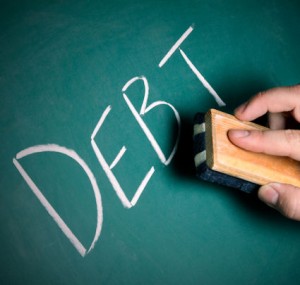Bankruptcy Blog
Priority Debt in Bankruptcy
by on 1/16/2013Priority debt is one of the three general categories debt is divided up into when filing for bankruptcy. A priority debt is a debt that is entitled to priority in payment in a bankruptcy case. A general listing of priority debts is provided in 11 U.S.C. § 507 of the Bankruptcy Code. The two most common types of priority debt in a consumer bankruptcy are (1) alimony, maintenance, or support and (2) income taxes that become due within the three year period before the bankruptcy filing date.
In a Chapter 7 bankruptcy, priority debts are unsecured debts that are considered so important that they are paid prior to general unsecured debts being paid. Section 726 of the Bankruptcy Code codifies the order in which unsecured debts would be paid and priority debts are first in that line. For example, a child support arrearage claim would be paid before an income tax claim, while the income tax claim would be paid before a credit card. A Chapter 7 usually has inadequate funds to pay all claims, or even all priority claims, so having priority status can be extremely important to creditors.
However, it is not guaranteed that even priority claims are paid in a Chapter 7. If the case is a no-asset case, which means the debtor has no property above and beyond the property allowances provided by the exemption statutes (see Exemptions: Protecting Your Real & Personal Property in Bankruptcy) neither the priority unsecured creditors nor the general unsecured creditors will be paid by the Trustee. On the other hand, if there are assets above and beyond the allowances of the exemption statues, the priority debt will be paid before any general unsecured debt. This can be extremely helpful to the debtor when the debt is both priority and non-dischargeable (which is normally the case). Having your property pay off the priority debt – which you will have to pay anyway – is a lot better than having your property go to pay off debts that would otherwise be dischargeable in your bankruptcy, thus reciting the old adage killing two birds with one stone.
In a Chapter 13 Reorganization, priority debt must be paid back in full within the 36-60 month repayment plan. As most Chapter 13 plans do not pay all claims in full, having priority status on a claim often results in significantly higher payments to that creditor. For example, a particular Chapter 13 plan could pay all general unsecured debt (i.e. credit cards, medical bills, personal loans, etc) at two cents on the dollar, but a priority income tax claim would still be paid in full.
This could be troublesome to specific debtors. Since the Chapter 13 plan is required to pay all priority claims in full, and the plan will not be confirmed by the Bankruptcy Court unless the Debtor can prove, among other things, that the plan is feasible; large priority claims can cause feasibility issues as to whether the debtor can afford the plan. Thus, a large priority debt could be the difference between the debtor’s Chapter 13 plan being confirmed or not. However, looking at the same situation with the glass half full, most priority claims are non-dischargeable, so it would be advantageous for a debtor to pay off the priority claim during the Chapter 13 bankruptcy rather than wait until the case has concluded.
If you have questions regarding priority claims, contact one of our experienced lawyers - we'd love to help.
Author - Chad Johnson - Founder and Lead Bankruptcy Attorney

